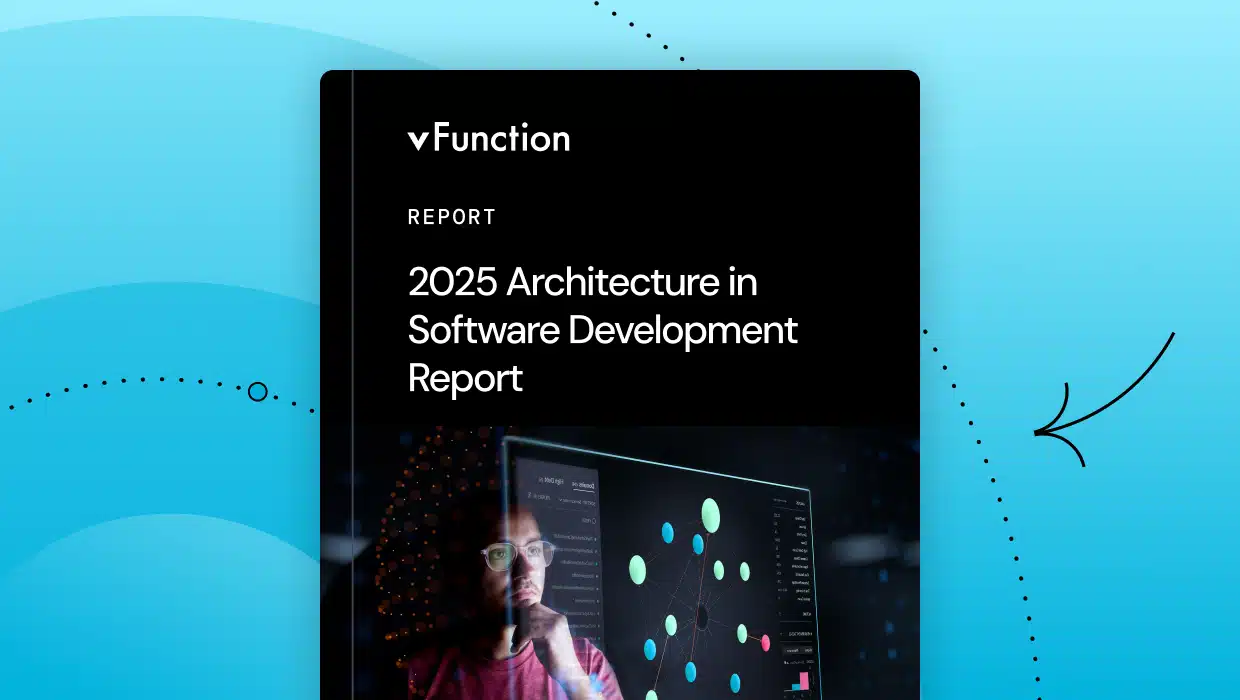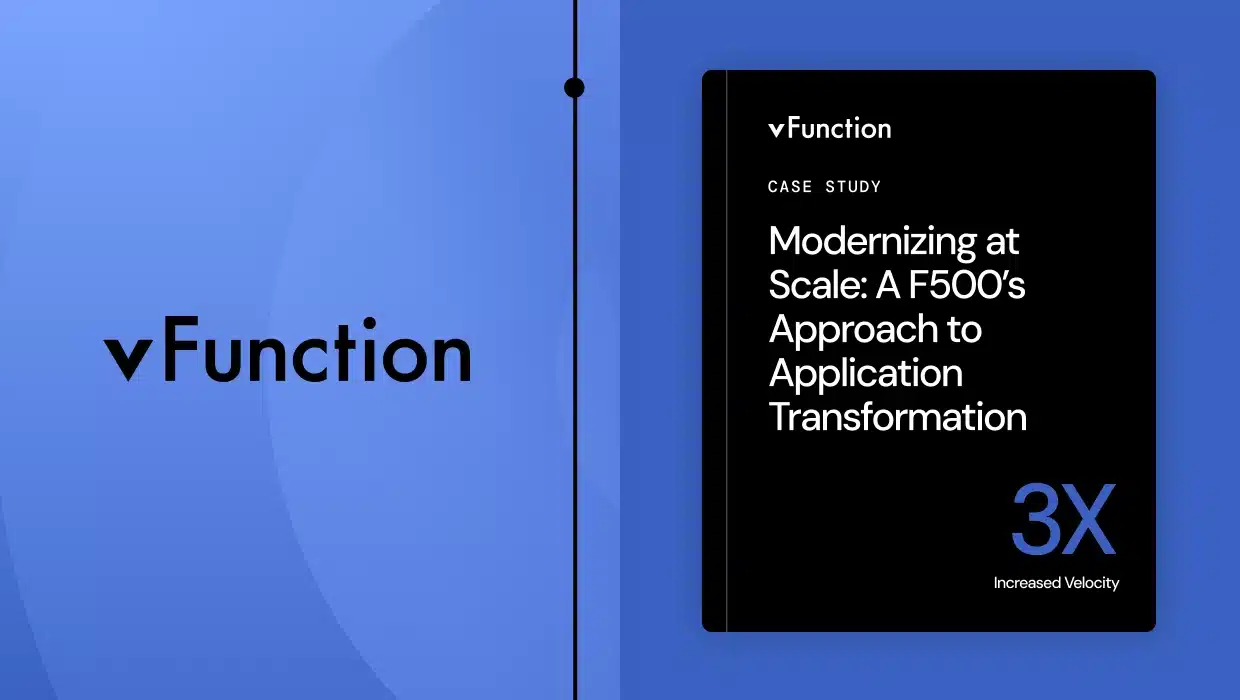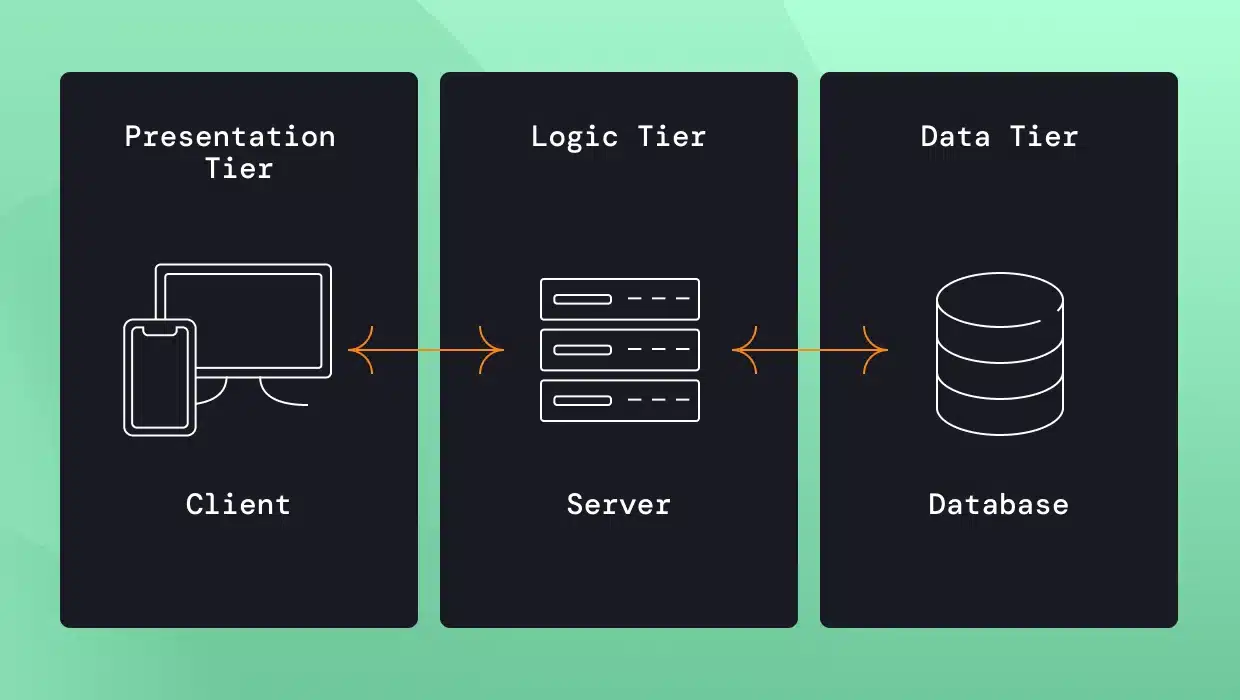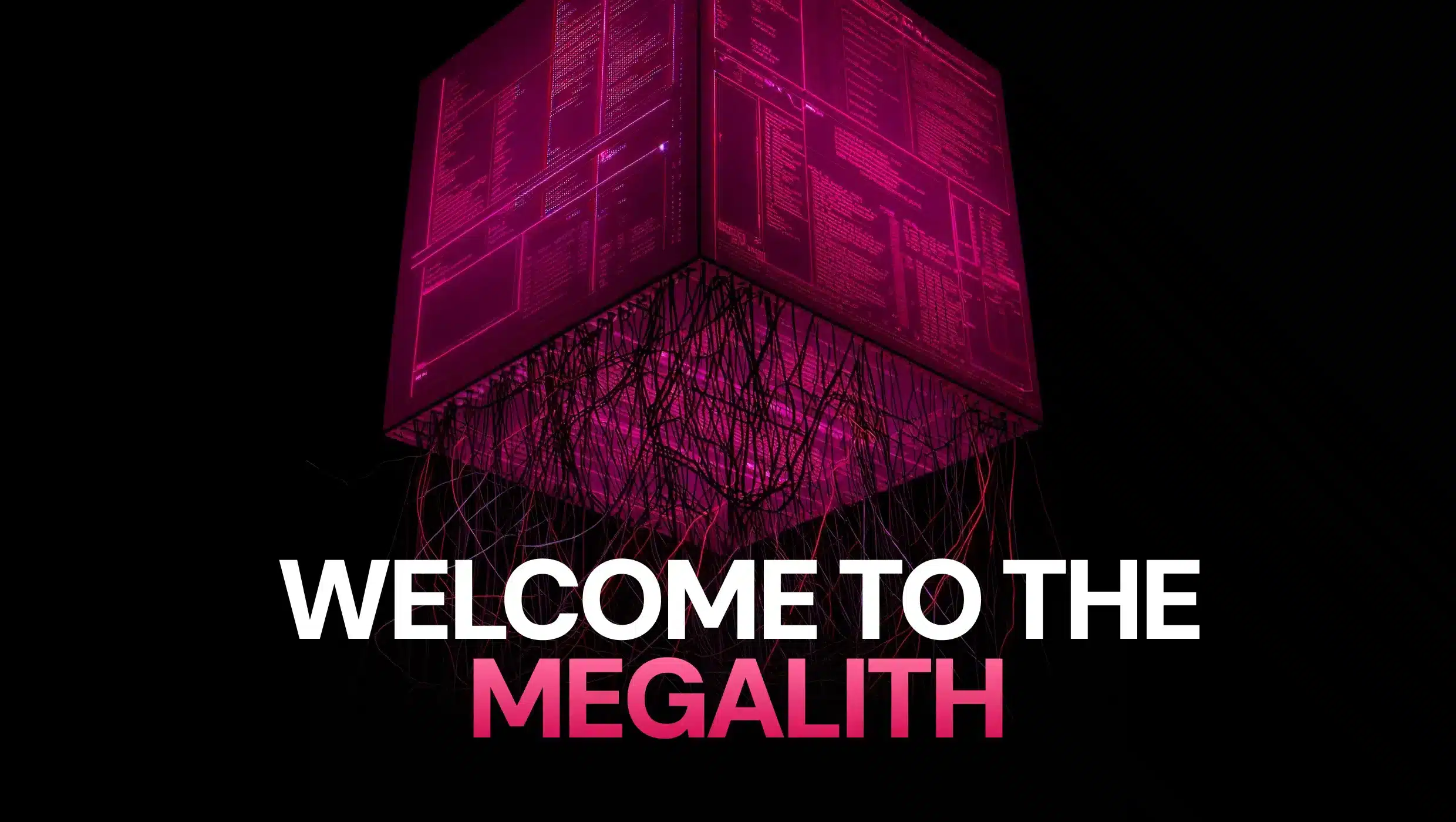In software development, it’s very common to see applications built with a specific architectural paradigm in mind. One of the most prevalent patterns seen in modern software architecture is the 3-tier (or three-tier) architecture. This model structures an application into three distinct tiers: presentation (user interface), logic(business logic), and data (data storage).
The fundamental advantage of 3-tier architecture lies in the clear separation of concerns. Each tier operates independently, allowing developers to focus on specific aspects of the application without affecting other layers. This enhances maintainability, as updates or changes can be made to a single tier with minimal impact on the others. 3-tier applications are also highly scalable since each tier can be scaled horizontally or vertically to handle increased demand as usage grows.
This post delves into the fundamentals of 3-tier applications. In it, We’ll cover:
- The concept of 3-tier architecture: What it is and why it’s important.
- The role of each tier: Detailed explanations of the presentation, application, and data tiers.
- How the three tiers interact: The flow of data and communication within a 3-tier application.
- Real-world examples: Practical illustrations of how 3-tier architecture is used.
- Benefits of this approach: Advantages for developers, architects, and end-users.
With the agenda set, let’s precisely define the three tiers of the architecture in greater detail.
What is a 3-tier application architecture?
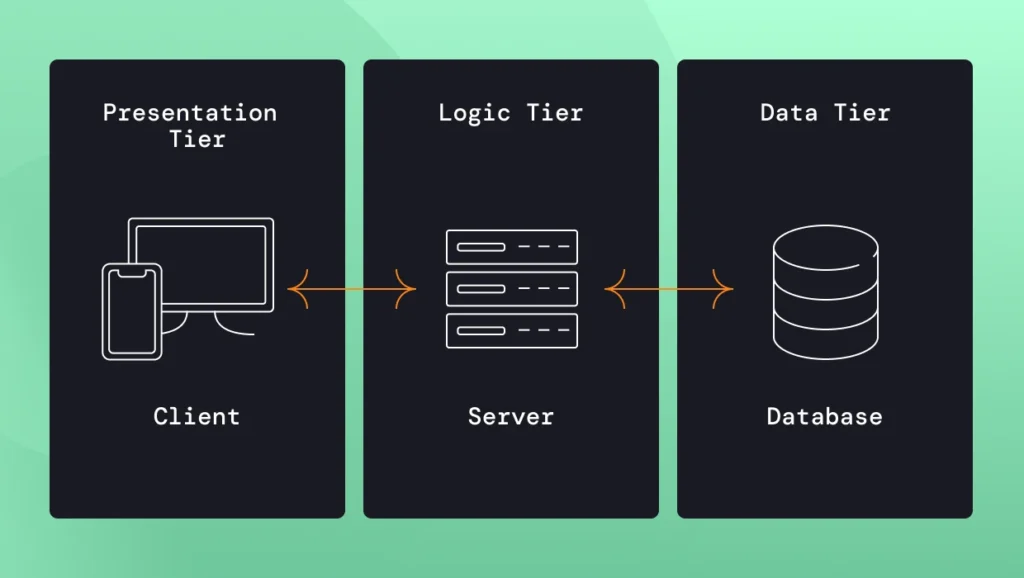
A 3-tier application is a model that divides an application into three interconnected layers:
- Presentation Tier: The user interface where the end-user interacts with the system (e.g., a web browser or a mobile app).
- Logic Tier: The middle tier of the architecture, also known as the logic tier, handles the application’s core processing, business rules, and calculations.
- Data Tier: Manages the storage, retrieval, and manipulation of the application’s data, typically utilizing a database.
This layered separation offers several key advantages that we will explore in more depth later in the post, but first, let’s examine them at a high level.
First, it allows for scalability since each tier can be scaled independently to meet changing performance demands. Second, 3-tier applications are highly flexible; tiers can be updated or replaced with newer technologies without disrupting the entire application. Third, maintainability is enhanced, as modifications to one tier often have minimal or no effect on other tiers. Finally, a layered architecture allows for improved security, as multiple layers of protection can be implemented to safeguard sensitive data and business logic.
How does a 3-tier application architecture work?
The fundamental principle of a 3-tier application is the flow of information and requests through the tiers. Depending on the technologies you use, each layer has mechanisms that allow each part of the architecture to communicate with the other adjacent layer. Here’s a simplified breakdown:
- User Interaction: The user interacts with the presentation tier (e.g., enters data into a web form or clicks a button on a mobile app).
- Request Processing: The presentation tier sends the user’s request to the application tier.
- Business Logic: The logic tier executes the relevant business logic, processes the data, and potentially interacts with the data tier to retrieve or store information.
- Data Access: If necessary, the application tier communicates with the data tier to access the database, either reading data to be processed or writing data for storage.
- Response: The logic tier formulates a response based on the processed data and business rules and packages it into the expected format the presentation tier requires.
- Display: The presentation tier receives the response from the application tier and displays the information to the user (e.g., updates a webpage or renders a result in a mobile app).
The important part is that the user never directly interacts with the logic or data tiers. All user interactions with the application occur through the presentation tier. The same goes for each adjacent layer in the 3-tier application. For example, the presentation layer communicates with the logic layer but never directly with the data layer. To understand how this compares to other n-tier architectural styles, let’s take a look at a brief comparison.
1-tier vs 2-tier vs 3-tier applications
While 3-tier architecture is a popular and well-structured approach, it’s not the only way to build applications. As time has passed, architecture has evolved to contain more layers. Some approaches are still used, especially in legacy applications. Here’s a brief comparison of 1-tier, 2-tier, and 3-tier architectures:
- 1-tier architecture (Monolithic):
- All application components (presentation, logic, and data) reside within a single program or unit.
- Simpler to develop initially, particularly for small-scale applications.
- It becomes increasingly difficult to maintain and scale as complexity grows.
- 2-tier architecture (Client-Server Applications):
- Divides the application into two parts: the client (presentation/graphical user interface) and a server, which typically handles both logic and data.
- Offers some modularity and improved scalability compared to 1-tier.
- Can still face scalability challenges for complex systems, as the server tier combines business logic and data access, potentially creating a bottleneck.
- 3-tier architecture:
- Separates the application into presentation, application (business logic), and data tiers.
- Provides the greatest level of separation, promoting scalability, maintainability, and flexibility.
- Typically requires more development overhead compared to simpler architectures.
The choice of architecture and physical computing tiers that your architecture uses depends on your application’s size, complexity, and scalability requirements. Using a multi-tier architecture tends to be the most popular approach, whether client-server architecture or 3-tier. That being said, monolithic applications still exist and have their place.
The logical tiers of a 3-tier application architecture
The three tiers at the heart of a 3-tier architecture are not simply physical divisions; they also represent a separation in technologies used. Let’s look at each tier in closer detail:
1. Presentation tier
- Focus: User interaction and display of information.
- Role: This is the interface that users see and interact with. It gathers input, formats and sanitizes data, and displays the results returned from the other tiers.
- Technologies:
- Web Development: HTML, CSS/SCSS/Sass, TypeScript/JavaScript, front-end frameworks (React, Angular, Vue.js), a web server.
- Mobile Development: Platform-specific technologies (Swift, Kotlin, etc.).
- Desktop Applications: Platform-specific UI libraries or third-party cross-platform development tools.
2. Logic tier
- Focus: Core functionality and business logic.
- Role: This tier is the brain of the application. It processes data, implements business rules and logic, further validates input, and coordinates interactions between the presentation and data tiers.
- Technologies:
- Programming Languages: Java, Python, JavaScript, C#, Ruby, etc.
- Web Frameworks: Spring, Django, Ruby on Rails, etc.
- App Server/Web Server
3. Data tier
- Focus: Persistent storage and management of data.
- Role: This tier reliably stores the application’s data and handles all access requests. It protects data integrity and ensures consistency.
- Technologies:
- Database servers: Relational (MySQL, PostgreSQL, Microsoft SQL Server) or NoSQL (MongoDB, Cassandra).
- Database Management Systems: Provide tools to create, access, and manage data.
- Storage providers (AWS S3, Azure Blobs, etc)
Separating concerns among these tiers enhances the software’s modularity. This makes updating, maintaining, or replacing specific components easier without breaking the whole application.
3-tier application examples
Whether a desktop or web app, 3-tier applications come in many forms across almost every industry. Here are a few relatable examples of how a 3-tier architecture can be used and a breakdown of what each layer would be responsible for within the system.
E-commerce websites
- Presentation Layer: The online storefront with product catalogs, shopping carts, and checkout interfaces.
- Logic Layer: Handles searching, order processing, inventory management, interfacing with 3rd-party payment vendors, and business rules like discounts and promotions.
- Data Layer: Stores product information, customer data, order history, and financial transactions in a database.
Content management systems (CMS)
- Presentation Layer: The administrative dashboard and the public-facing website.
- LogicLayer: Manages content creation, editing, publishing, and the website’s structure and logic based on rules, permissions, schedules, and configuration
- Data Layer: Stores articles, media files, user information, and website settings.
Customer relationship management (CRM) systems
- Presentation Layer: Web or mobile interfaces for sales and support teams.
- Logic Layer: Processes customer data, tracks interactions, manages sales pipelines, and automates marketing campaigns.
- Data Layer: Maintains a database server with data for customers, contacts, sales opportunities, and support cases.
Online booking platforms (e.g., hotels, flights, appointments)
- Presentation Layer: Search features, promotional materials, and reservation interfaces.
- Logic Layer: Handles availability checks, real-time pricing, booking logic, and payment processing to 3rd-party payment vendors.
- Data Layer: Stores schedules, reservations, inventory information, and customer details.
Of course, these are just a few simplified examples of a 3-tier architecture in action. Many of the applications we use daily will use a 3-tier architecture (or potentially more tiers for a modern web-based application), so finding further examples is generally not much of a stretch. The examples above demonstrate how application functionality can be divided into one of the three tiers.
Benefits of a 3-tier app architecture
One of the benefits of the 3-tier architecture is it’s usually quite apparent why using it would be advantageous over other options, such as a two-tier architecture. However, let’s briefly summarize the advantages and benefits for developers, architects, and end-users who will build or utilize the 3-tier architecture pattern.
Scalability
Each tier can be independently scaled to handle increased load or demand. For example, you can add more servers to the logic tier to improve processing capabilities without affecting the user experience or add more database servers to improve query performance.
Maintainability
Changes to one tier often have minimal impact on the others, making it easier to modify, update, or debug specific application components. As long as contracts between the layers (such as API definitions or data mappings) don’t change, developers can benefit from shorter development cycles and reduced risk.
Flexibility
You can upgrade or replace technologies within individual tiers without overhauling the entire system. This allows for greater adaptability as requirements evolve. For example, if the technology you are using within your data tier does not support a particular feature you need, you can replace that technology while leaving the application and presentation layers untouched, as long as contracts between the layers don’t change (just as above).
Improved Security
Multiple layers of security can be implemented across tiers. This also isolates the sensitive data layer behind the logic layer, reducing potential attack surfaces. For instance, you can have the logic layer enforce field-level validation on a form and sanitize the data that comes through. This allows for two checks on the data, preventing security issues such as SQL injection and others listed in the OWASP Top 10.
Reusability
Components within the logic tier can sometimes be reused in other applications, promoting efficiency and code standardization. For example, a mobile application, a web application, and a desktop application may all leverage the same application layer and corresponding data layer. If the logic layer is exposed externally through a REST API or similar technology, it also opens up the possibility of leveraging this functionality for third-party developers to take advantage of the API and the underlying functionality.
Developer specialization
Teams can specialize in specific tiers (e.g., front-end, back-end, database), optimizing their skills and improving development efficiency. Although many developers these days focus on full-stack development, larger organizations still divide teams based on frontend and backend technologies. Implementing a 3-tier architecture fits well with this paradigm of splitting up responsibilities.
The benefits listed above cover multiple angles, from staffing and infrastructure to security and beyond. The potential upside of leveraging 3-tier architectures is wide-reaching and broadly applicable. It leaves no question as to why 3-tier architectures have become the standard for almost all modern applications. That being said, many times, the current implementation of an application can be improved, and if an application is currently undergoing modernization, how do you ensure that it will meet your target and future state architecture roadmap? This is where vFunction can swoop in and help.
How vFunction can help with modernizing 3-tier applications
vFunction offers powerful tools to aid architects and developers in streamlining the modernization of 3-tier applications and addressing their potential weaknesses. Here’s how it empowers architects and developers:
Architectural observability
vFunction provides deep insights into your application’s architecture, tracking critical events like new dependencies, domain changes, and increasing complexity over time. This visibility allows you to pinpoint areas for proactive optimization and the creation of modular business domains as you continue to work on the application.
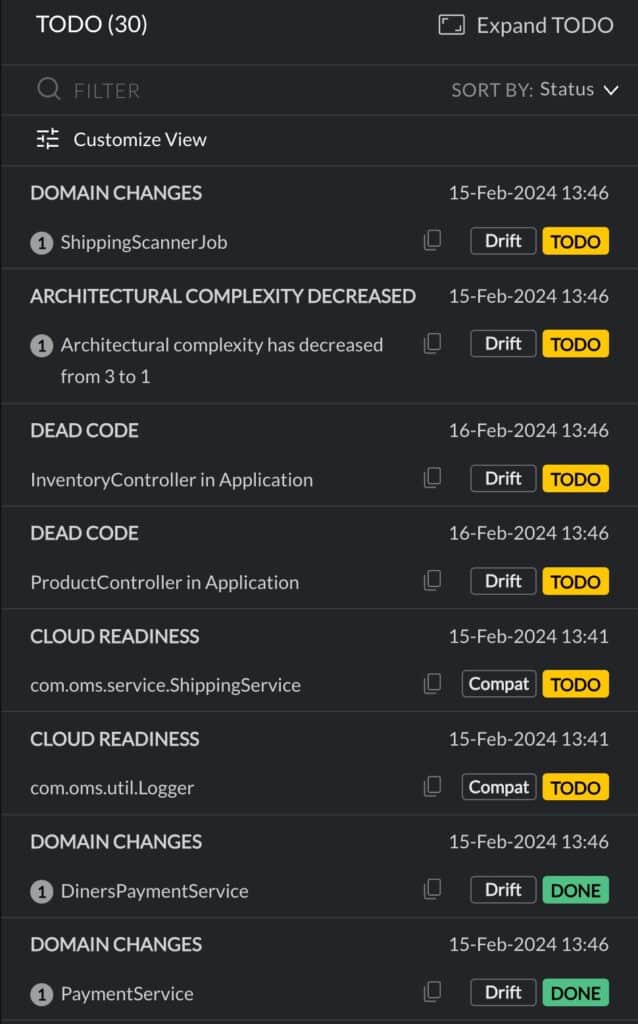
Resiliency enhancement
vFunction helps you identify potential architectural risks that might affect application resiliency. It generates prioritized recommendations and actions to strengthen your architecture and minimize the impact of downtime.
Targeted optimization
vFunction’s analysis pinpoints technical debt and bottlenecks within your applications. This lets you focus modernization efforts where they matter most, promoting engineering velocity, scalability, and performance.
Informed decision-making
vFunction’s comprehensive architectural views support data-driven architecture decisions on refactoring, migrating components to the cloud, or optimizing within the existing structure.
By empowering you with deep architectural insights and actionable recommendations, vFunction accelerates modernization architectural improvement processes, ensuring your 3-tier applications remain adaptable, resilient, and performant as they evolve.
Conclusion
In this post, we looked at how a 3-tier architecture can provide a proven foundation for building scalable, maintainable, and secure applications. By understanding its core principles, the role of each tier, and its real-world applications, developers can leverage this pattern to tackle complex software projects more effectively.
Key takeaways from our deep dive into 3-tier applications include:
- Separation of Concerns: A 3-tier architecture promotes clear modularity, making applications easier to develop, update, and debug.
- Scalability: Its ability to scale tiers independently allows applications to adapt to changing performance demands.
- Flexibility: Technologies within tiers can be updated or replaced without disrupting the entire application.
- Security: The layered design enables enhanced security measures and isolation of sensitive data.
As applications grow in complexity, tools like vFunction become invaluable. vFunction’s focus on architectural observability, analysis, and proactive recommendations means that architects and developers can modernize their applications strategically, with complete visibility of how every change affects the overall system architecture. This allows them to optimize performance, enhance resiliency, and make informed decisions about their architecture’s evolution.
If you’re looking to build modern and resilient software, considering the 3-tier architecture or (a topic for another post) microservices as a starting point, combined with tools like vFunction for managing long-term evolution, can be a recipe for success. Contact us today to learn more about how vFunction can help you modernize and build better software with architectural observability.

